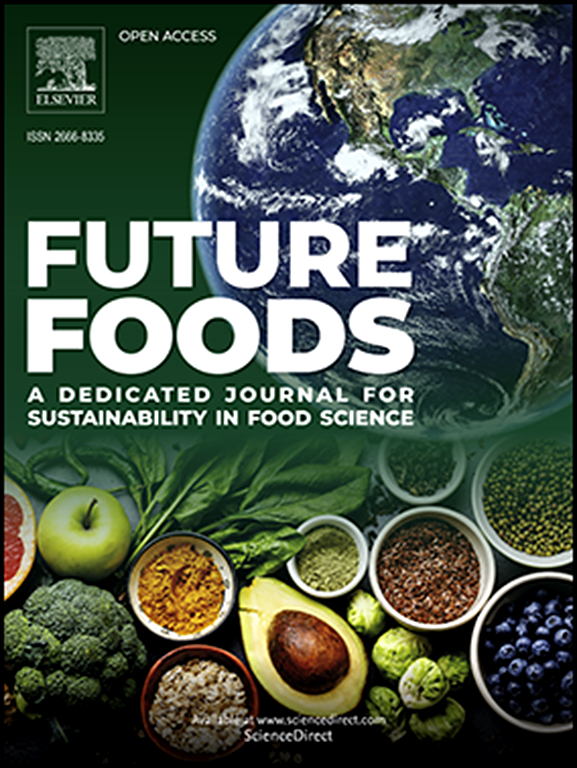Protein extraction from oat: Isoelectric precipitation and water-based extraction
IF 7.2
Q1 FOOD SCIENCE & TECHNOLOGY
引用次数: 0
Abstract
Protein extraction by alkaline extraction-isoelectric precipitation (AE-IEP) uses alkaline conditions that contribute to off-colour formation, through auto-oxidation of inherent phenolic compounds. We aimed to develop an alternative protein extraction process yielding comparable protein content to AE-IEP while avoiding alkaline conditions. It was hypothesised that a water-based extraction (WBE) of oats would yield lightly coloured native proteins. Protein contents and yields were determined using a newly established nitrogen-to-protein conversion factor of 5.12, based on the amino acid composition. WBE led to a comparable protein content to AE-IEP (69.5 % vs 70.1 % dry matter (DM)), but a 2.5 times lower yield (0.27 g/g protein DM). SDS-PAGE and quantitative proteomics revealed a protein composition of 60 % globulins and 40 % prolamins in both concentrates. A similar protein nativity was observed using differential scanning calorimetry. The WBE yielded in a lighter-coloured protein powder. The low protein yield of water-based extraction is currently a limitation for industrial applications. Nevertheless, this simple process can be used as a pre-treatment for AE-IEP to produce a more neutral-coloured powder. This study expands the knowledge on protein extraction from oats by comparing novel extraction methods with classic AE-IEP and establishing the nitrogen-to-protein conversion factor for oats.
求助全文
约1分钟内获得全文
求助全文
来源期刊

Future Foods
Agricultural and Biological Sciences-Food Science
CiteScore
8.60
自引率
0.00%
发文量
97
审稿时长
15 weeks
期刊介绍:
Future Foods is a specialized journal that is dedicated to tackling the challenges posed by climate change and the need for sustainability in the realm of food production. The journal recognizes the imperative to transform current food manufacturing and consumption practices to meet the dietary needs of a burgeoning global population while simultaneously curbing environmental degradation.
The mission of Future Foods is to disseminate research that aligns with the goal of fostering the development of innovative technologies and alternative food sources to establish more sustainable food systems. The journal is committed to publishing high-quality, peer-reviewed articles that contribute to the advancement of sustainable food practices.
Abstracting and indexing:
Scopus
Directory of Open Access Journals (DOAJ)
Emerging Sources Citation Index (ESCI)
SCImago Journal Rank (SJR)
SNIP
 求助内容:
求助内容: 应助结果提醒方式:
应助结果提醒方式:


